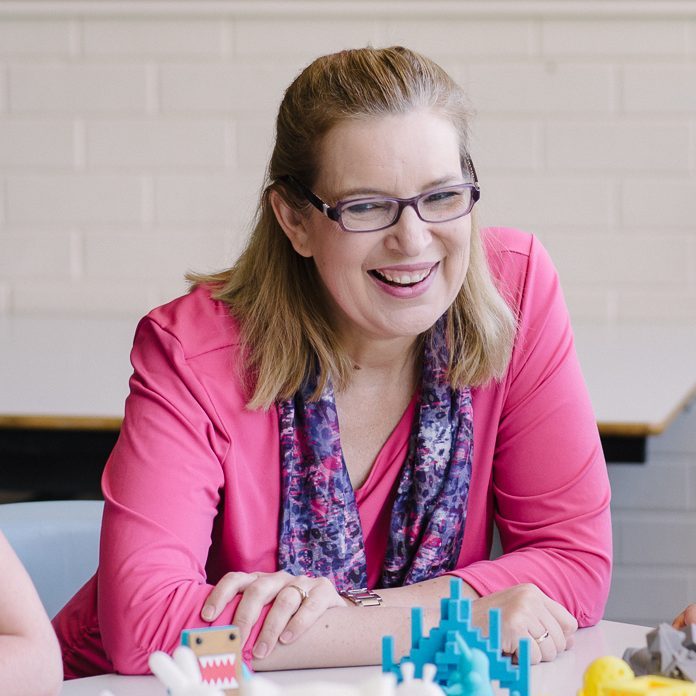I spend a lot of time talking with teachers about the important role failure can play in learning. Backed by Carol Dweck’s mindset research and armed with all sorts of anecdotes about the power of design thinking, I can often be heard waxing lyrically and enthusiastically about the benefits of learning how to fail well. Words like resilience, persistence, prototyping and iteration roll off my tongue as I extol the virtues of knowing how to respond when things don’t go to plan.
I recently visited the US to work with teachers in the Denver Public School district. I had just finished addressing a room full of teachers when one of the participants approached me and told me that he had enjoyed my presentation. He went on to say that although he agreed with my sentiments about helping students to become flexible and adaptive learners who can solve problems and think creatively and critically, he did not support my use of the word, failure.
He told me: “the word ‘fail’ is banned my classroom. I tell my students that there is no such thing as failure. Everyone can be successful and every effort counts.”
This teacher’s words have stayed with me over the past few weeks and I’ve been reflecting on what I really mean when I say that I want students to know how to fail well. I share this teacher’s beliefs that all students should feel safe to take risks and have a go without fear of failure and that we want students to feel that their efforts are valued and accepted. So, am I a hypocrite with confused educational beliefs, or is it valid for me say that I want students to fail and not fail in the same breath?
My pondering has led me to the conclusion that these are not mutually exclusive ideas.
Most dictionaries define the word failure as a person or action that doesn’t perform as expected. The definitions I have read tend to describe failure as a permanent concept. You can be a success or a failure but not both. I believe that all students can achieve and improve, and I think that teachers play a crucial role in helping their students to develop positive attitudes and self-belief as learners.
When I talk about failing well, I am not talking about students believing that they are failures who can’t learn. I’m talking about having a growth mindset and viewing failure as a natural part of learning that can be embraced as an opportunity to improve and grow.
If this teacher heard my use of the word failure to imply otherwise, perhaps what I needed him to hear was that I want students to be failers rather than failures. Most dictionaries wouldn’t even include failer as being a real word beyond being someone who fails. However, I think it helps me to be clear about my message.
I think effective learners know how to fail well. They know that they need to fail in order to ultimately succeed. So, what does a successful failer look like? What do they do when something fails? How do they think? What strategies do they use? How do they use failing to help them succeed?
I’ve spent quite a bit of time hanging out with some very successful failers and I’ve noticed common habits.
6 habits of a successful failer
1. Successful failers are curious
They pay attention to the world around them, ask lots of questions and enjoy coming up with interesting new ideas. A good failer will test out an idea for the sheer joy of finding out whether it will work or not. If an idea fails, it leads to more questions and opportunities to try new things. They enjoy learning from mistakes and acquiring new knowledge along the way.
At Makers Empire, we enjoy testing out different types of 3D printers. We want to know, for example, whether an interesting new metallic filament will work with a particular printer even though we know that this might fail and result in needing to spend an hour unclogging a blocked nozzle.
2. Successful failers have creative confidence
They believe that they have the skills and capabilities to solve problems and develop creative solutions. Successful failers believe that if they make good use of the processes and resources in their ‘design-thinking’ toolkits that they will eventually arrive at a solution to even the most challenging problems. They back themselves as innovative and inventive creators of solutions.
I loved the look of determination on the face of a five-year-old I met recently as he persisted with a boat he was designing. Even though the boat had sunk twice, he had no doubt that he would eventually succeed, and the look on his face when he floated his boat was one of sheer joy!
3. Successful failers get back on their bikes.
They don’t give up when things don’t go the way they planned. Successful failers are resilient and persistent. They know that they themselves are not failures just because something they were working on failed. They pick themselves up, dust themselves off and get back on their bikes!
After designing a mobile phone holder for their school groundsperson that was too small for his phone, a student told me that the project was challenging for her group every step of the way, but they were resilient, kept trying and got there in the end.
4. Successful failers expect to fail.
They see learning as an ongoing, iterative process. They don’t expect to get things right the first time. In fact, successful failers deliberately create prototypes to test with the expectation that their projects will fail in some way, giving them valuable insights and information for their next iteration.
I love this quote from the Stanford Design School: “prototype as if you know you’re right, but test as if you know you’re wrong.”
5. Successful failers depend on others
They know that they need to put their ideas and creations to the test, and this means seeking feedback from others. By asking people to test products and solutions, successful failers learn what they need to do to improve their designs or ideas to achieve improved outcomes. They have growth mindsets and welcome feedback as an opportunity to learn and grow. They are reflective, responsive and listen to what others have to say.
Carol Dweck‘s mindset work tells us that people with a fixed mindset see their intelligence and personality as unchangeable and are likely to respond to constructive feedback as if it’s a personal attack. Those with growth mindsets, however, tend to see feedback as an opportunity to develop and improve their skillsets.
Successful failers set goals
They know what they are trying to achieve and work towards achieving their desired outcomes. From a Design Thinking point of view, this means having a clear and focussed design brief. As designers, successful failers, develop deep insights and understanding of the needs of the people they are designing solutions for. They clearly define the problems or challenges they are addressing and develop criteria for success. They know what it will look like when they succeed. This helps them identify things that have failed along the way and decide where to focus their energy as they work towards achieving their goals.
Tim Brown, CEO and President of IDEO reinforces the importance of having clearly defined design goals when he says: ‘there is nothing more frustrating than coming up with the right answer to the wrong question.”
I am really glad that I met that teacher in Denver: he made me think and become much clearer on the messages I am giving to teachers. I think we would agree that we want our students to both fail and succeed. Our young learners need opportunities to develop as successful failers in a supportive environment where their dispositions as learners and creative confidence are nurtured.
AUTHOR BIOGRAPHY

Mandi Dimitriadis, DipT. is Makers Empire’s Director of Learning. She is a highly respected educator and speaker who works internationally with thousands of schools to help teachers develop Design Thinking, embrace maker pedagogy and cover Design & Technology Curriculum. She is an experienced classroom teacher who recognises the power of technology to enhance teaching and improve educational outcomes. Mandi has extensive experience with curriculum development and learning, having previously developed programs for the Australian Government’s Department of Education.



One Response